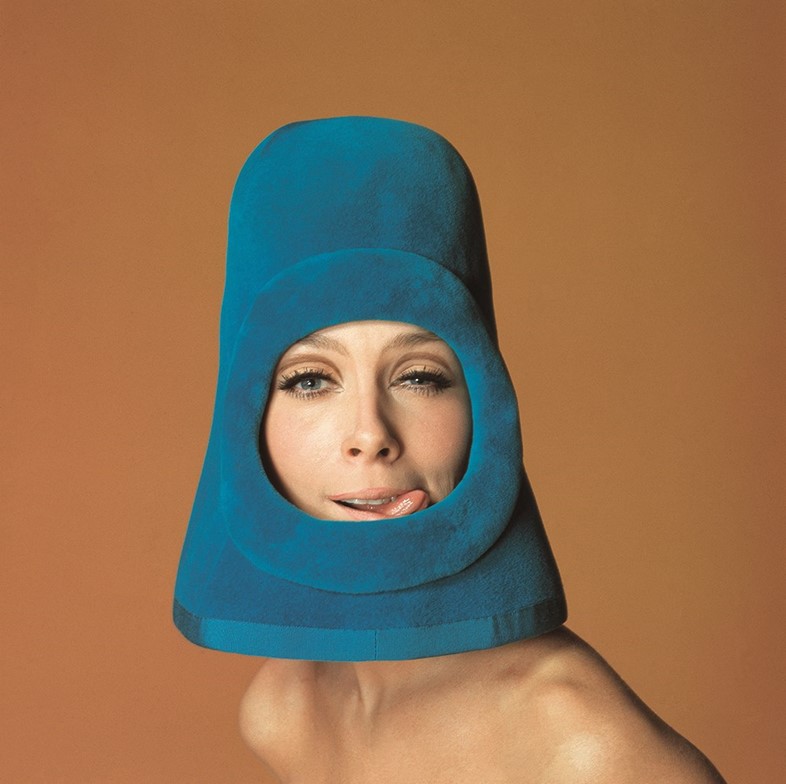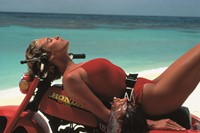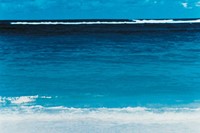"When ideas come into one's mind we must act on them and dream: this is happiness," says the iconic image-maker of his upcoming exhibition, True Blue
Jean-Daniel Lorieux is an eternal optimist. His photographic works – driven by the pursuit of palm tree-strewn sunsets, azure seas and extraordinarily beautiful women – have become a visual doctrine of joy, sensuality and escapism. Born and bred in Paris, Lorieux embarked on a career in fashion photography at the city's progressive Studio Harcourt, before swiftly ascending the ranks of glossy style titles such as Vogue Paris and L'Official during the 1970s, where his alluring, high-contrast view on life and style defined the era.
Now, almost 50 years later, the charismatic image-maker presents a new exhibition at Berlin's Production Berlin, entitled True Blue. Blue being the operative word – acting as the wistful narrative that connects each of the works within the show. "From the vivid blue of the sky to the deep blue of the sea, True Blue appears as a hint about my work and my life," explains the 79-year-old in a typically buoyant manner. Here, Lorieux talks in greater detail about the exhibit, the pursuit of perfection and the lost art of shooting on film.
On the inspiration behind True Blue...
"The concept of my new exhibition was to gather pictures from various photoshoots I have created in many different locations from all over the world, but that meet at some point. True Blue hints of an ongoing theme in my life and my work: the vivid blue of the sky as well as the deep blue of the sea."
On his photographic highlights from the show...
"In my mind, the two pictures that are the most striking are the one with [supermodel] Triffie holding two large tuna fishes for the V de Ve swimsuit brand. I think this is one of my most iconic shots, as well as the images where the same model is holding a large fish on the beach. I also love the one in which a man, just back from fishing, is drinking a refreshing Coca-Cola."
On his extensive travels and the pursuit of perfection...
"I have been on many amazing trips to idyllic islands all over the world. From the Seychelles to the Bahamas, the Maldives, Mauritius and Panama. Once, on an island we had rented in the Bahamas for a shoot, a small plane landed in a state of emergency and so had to leave the Spanish Wells island for the Maldives, where I used to realise photos and film adverts for an American brand of cigarettes. We used to come quite often, but I always wanted the same bungalow facing the sea. So as not to be disturbed by my whims, the president of the group decided to buy the island that is now owned by the group: Murati Island! Sometimes, when the beach is full of algae, I make people build a white wooden floor to hide the imperfections of the sea – perfect enough to take pictures."
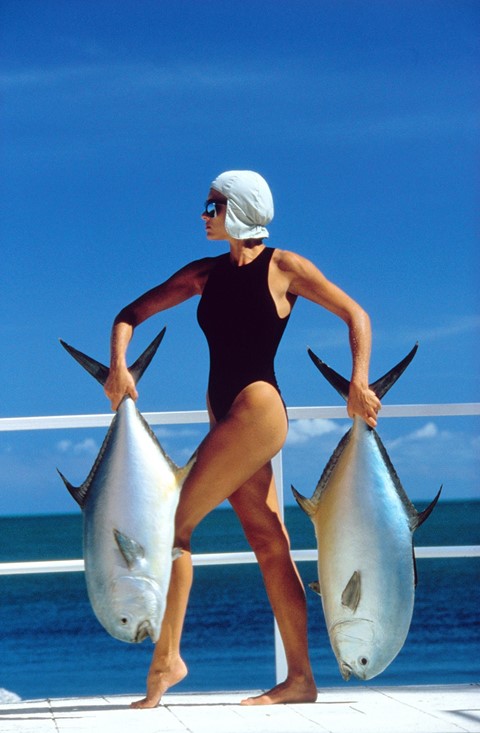
On what motivates his creative practice...
"It could be a setting, a gorgeous model or even the beautiful dress of a designer, then, from one of these ideas even more ideas spring to mind. Sometimes I have too many ideas, in fact, sometimes they're too happy or a little bit crazy! I think that when ideas come to one's mind we must act on it and dream: this is happiness."
On his greatest aesthetic influences...
"The film industry widely influenced me when I was younger. Once, I even had the opportunity to assist a famous director and write several scenarios for films. The movies from the 1960s – what a dream! Then, I had to leave my home and was forced to do two years of war in Northern Africa, where I had to take awful pictures of what happened over there. When I came back to France, I was quite lost and shocked and had no concrete idea of what I could do next. I had to chase away these black clouds that turned my vision and think of happiness, life, blue sky and the extreme beauty of women. This is how I started out – fascinated by top models I dream about being in front of my lens… or in my arms! All those clouds then faded away and the sun came and followed me."
On the evolution of his own photographic practice...
"Nowadays, I think that one's photographic technique isn't that important. It has become entirely automatic and quite easy. The most important aspect is the overall look and the angle from which we choose to build the picture. It determines the way we see the final photographs. Then, the choice of the lenses depends on this specific approach: large setting, beauty, portraits… We can also improve a picture with a specific position and setting of lighting and flashes. However, I dare say I miss the film I use to put in my own camera. The quality was impressive depending on the type of film we chose and we were waiting with impatience for each photograph to be developed! There is no suspense anymore. Everything is automatic and all pictures are good."
On the lasting impact he would like his latest exhibit to make...
"I would like the visitors of True Blue to leave with a ray of sunshine in their hearts."
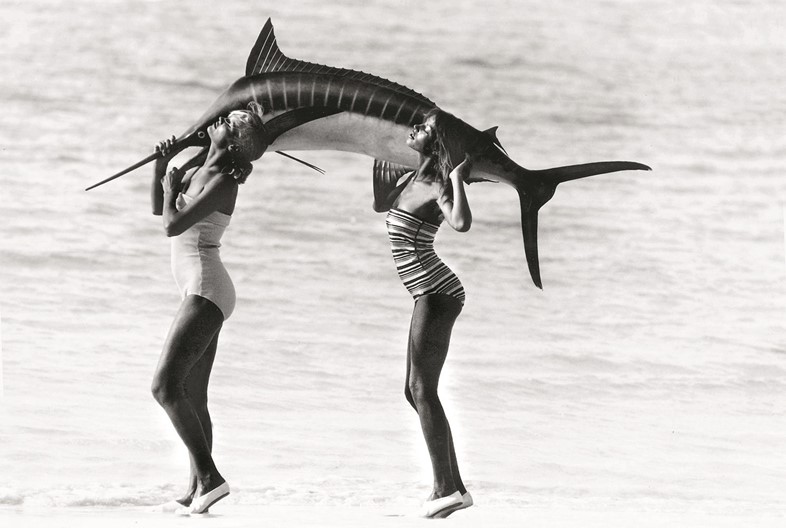
True Blue by Jean-Daniel Lorieux runs from April 29th to June 11th, 2016 at Production Berlin, Berlin.
